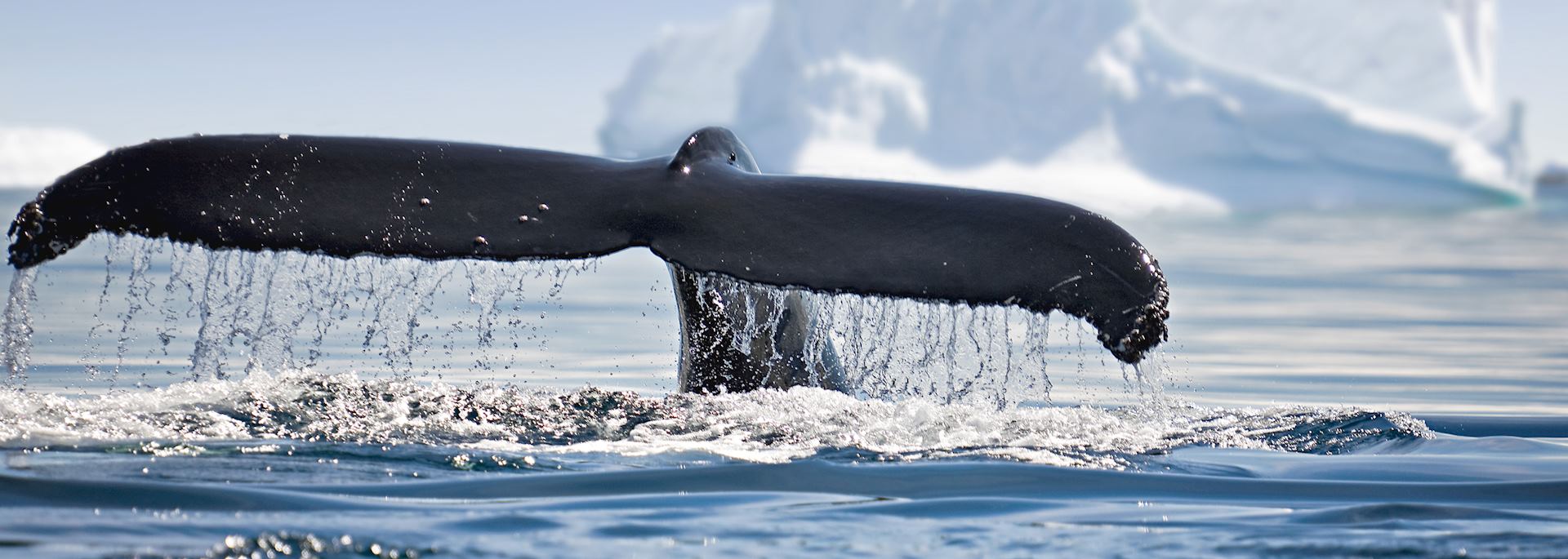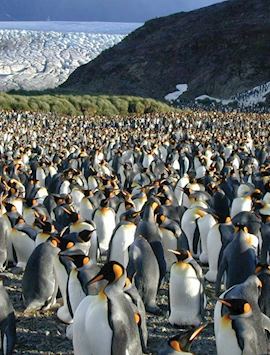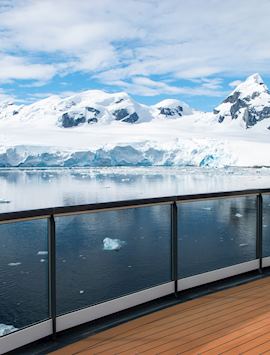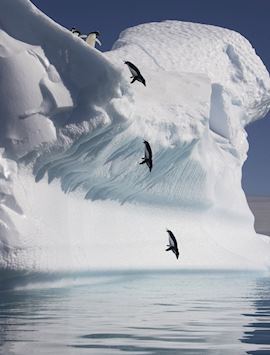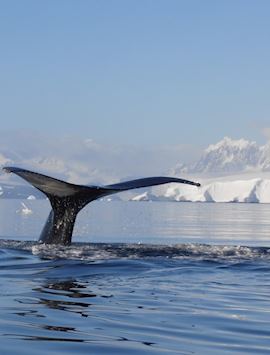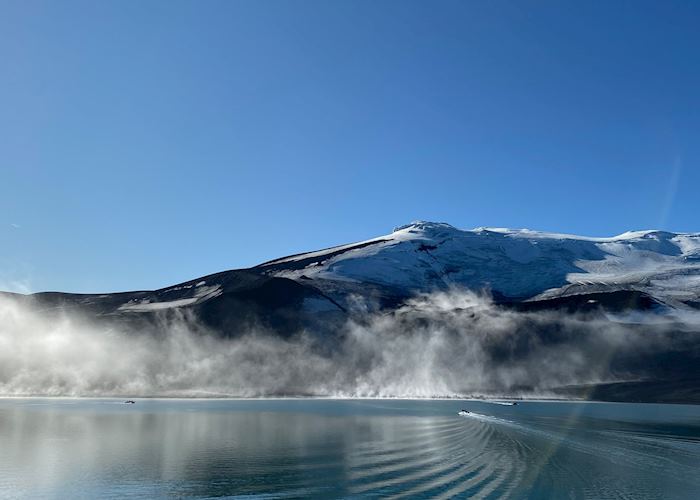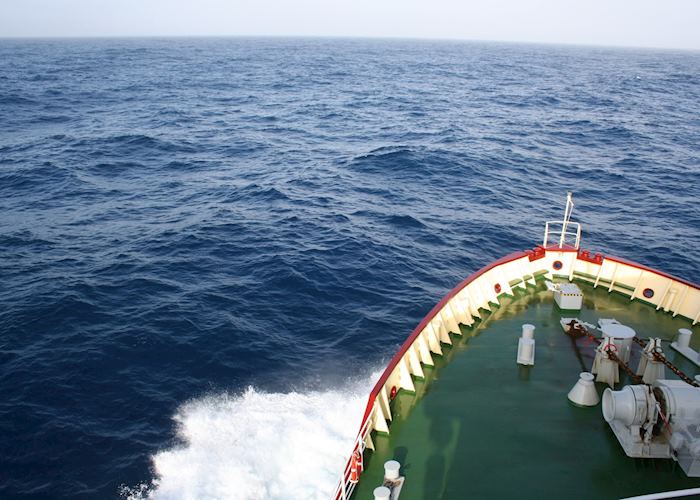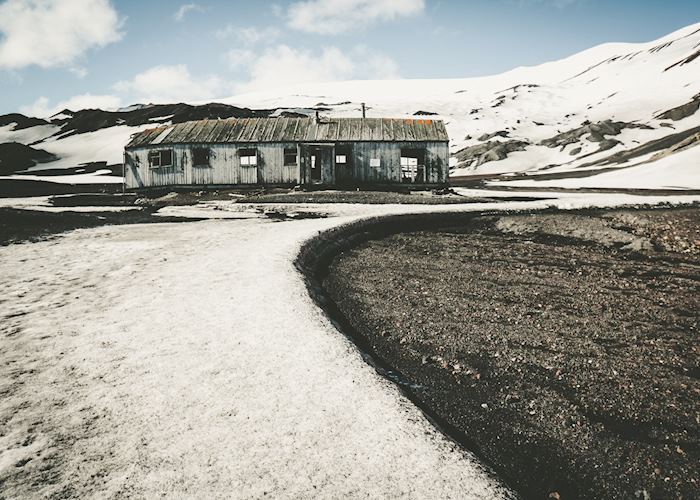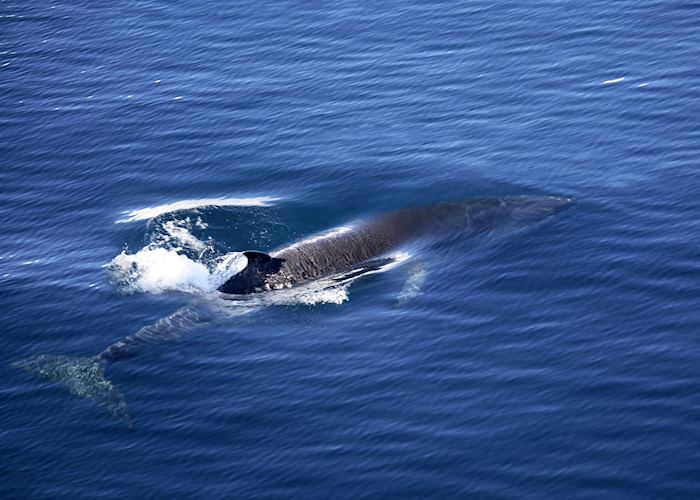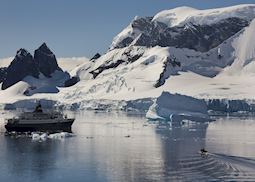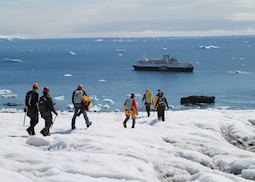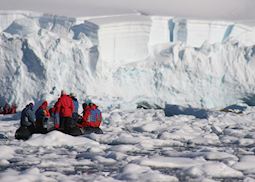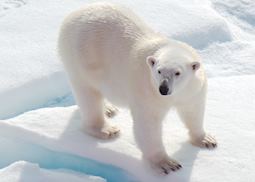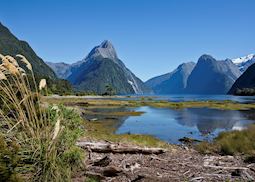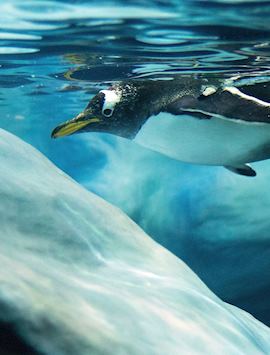
Antarctica’s a place of almost engulfing whiteness, hard to fathom yet libraries of writings have been dedicated to it. Whatever draws you there, our specialists understand. They have all experienced this ultimate wilderness first-hand and will work with you to plan an Antarctic expedition cruise that’s tailored to your needs. They’ll take into account how much time you want to spend at sea, how active you wish to be, and whether you want to expand your trip to take in South Georgia or the Falkland Islands.
Our polar team will prepare you for the sights and the sensory bombardment of this land of eternal winter. Penguins are your constant (and you might spot whales, if you’re lucky). But, our specialists will explain, holidays to Antarctica are also about absorbing the sheer scale and surreal shapes of the continent’s landscapes: its glaciers, icebergs, ice floes and mountains.
Suggested tours for Antarctica
These tours give you a starting point for what your holiday to Antarctica could entail. Treat them as inspiration, as each trip is created uniquely for you.
Why travel with Audley?
- 100% tailor-made tours
- Fully protected travel
- Established for over 25 years
- 98% of our clients would recommend us
Best time to visit
Our specialists advise on the best months to visit Antarctica, including information about climate, events and festivals.
Request our brochure
Covering all seven continents, The World Your Way shows you how you can see the world with us. It features trip ideas from our specialists alongside hand-picked stays and experiences, and introduces our approach to creating meaningful travel experiences.

Useful information for planning your holiday in Antarctica
Antarctica has no native population, and scientists and researchers from around the world are the only temporary residents. English will be the lingua franca on board your ship.
Chilean or Argentinian pesos are used in Antarctica. We recommend taking US dollars, which you can use on board your vessel. A tab system operates on board, which you settle at the end of your trip.
For the latest travel advice for Antarctica, including entry requirements, health information, and the safety and security situation, please refer to the Foreign, Commonwealth & Development Office website.
Seafood is very popular in Antarctica, as all the residents live near the sea or freshwater. Fish such as flounder, halibut, salmon, sea bass, swordfish, trout, tuna, and wem (a fish only found in the continent’s waters) is often caught and cooked on the same day.
On board your vessel, you’ll be served hearty buffet-style breakfasts and lunches, while dinner is usually an à la carte, table-service meal. Food on board is usually pan-European or international in scope, with fish and meat both on the menu, as well as vegetarian options.
Dishes traditionally eaten in Antarctica (though you’re unlikely to be served them) include pemmican, a mix of ground and dried meat and fat designed to boost energy levels, and hoosh, a mix of pemmican, biscuits, and melted ice. Sledging biscuits, made from flour, baking soda, salt, butter, and water, are also a staple.
Part of the allure of Antarctica is simply being in such an otherworldly place, surrounded by ice, snow, and emptiness. You’ll journey through ice floes, and observe wildlife including several species of penguin, seals, and (with luck) whales. Depending on your vessel and weather conditions, you might have the opportunity to camp on the ice, sit among a colony of penguins, take on a short trek, visit a scientific research base, or go kayaking.
Where exactly you go in the continent, and where you make shore landings, depends entirely on local weather conditions, which can be very changeable. Certain cruises visit the sub-Antarctic islands of South Georgia and the Falkland Islands. All Audley’s expedition cruises to Antarctica visit the Antarctic Peninsula, which includes the South Shetland Islands. You can read more about all of these Antarctic and sub-Antarctic places to decide where’s right for you.
There are no hotels in Antarctica, so you’ll stay on board your expedition cruise vessel for the duration of your time there. Almost all cabins are en suite and have a window or porthole. However, there’s a range of vessels to choose from — some are larger than others with more extensive facilities, while some are slightly more modern or European in feel, but all are equipped with expert guides, along with a fleet of Zodiacs and kayaks, to help you make the most of landings. You can browse our collection Antarctic expedition cruise vessels to find one that matches your preferences.
Penguins are your constant: look out for Adélie, macaroni, chinstrap, and gentoo species. Seals, from Weddell to leopard seals, are also common. Less easily spotted are whales, which include Blue, humpback, and minke whales. Out at sea on the Drake Passage, you might see wandering albatrosses, Arctic terns, and Antarctic shags. You can find out more about the continent’s rich wildlife-viewing possibilities in our guide to Antarctica’s wildlife.
It takes around 23 hours to fly from London to Ushuaia, in the far south of Argentina (via Buenos Aires). You’ll then board your expedition cruise at Ushuaia for the two-day crossing of the Drake Passage to reach the South Shetland Islands, and then the Antarctic Peninsula.
Although you travel to, and around Antarctica on an expedition cruise vessel, there are numerous options when it comes to exploring. Depending on your vessel and weather conditions, you can explore by Zodiac (motor-powered dinghies), by kayak, and on short walks on land.
Antarctica’s time zone is GMT-3.
Use our travel tool to find up-to-date visa and passport requirements for Antarctica. Enter where you’re travelling to and from (including any stopover destinations en route or flight layovers), along with your intended travel dates and passport details, for a full list of requirements.
No, no specific vaccinations are required to visit Antarctica. However, before your travel, it’s a good idea to check with your doctor, and to be up to date with all the recommended vaccinations for life in the UK. You can also read more about vaccinations that may or may not be useful when visiting Antarctica on the Travel Health Pro website.
Most trips to Antarctica involve a two-day crossing of Drake Passage, the strip of ocean between Cape Horn, the southernmost tip of Argentina, and the South Shetland Islands just off the Antarctic Peninsula. This stretch of water can be quite rough, and seasickness is common. Your doctor can advise on which medication or preventative measures are right for you.
Antarctica in pictures
Our expert guides to travelling in Antarctica
Written by our specialists from the viewpoint of their own travels, these guides will help you decide on the shape of your own trip to Antarctica. Aiming to inspire and inform, we share our recommendations for how to appreciate Antarctica at its best.
-
![My travels in Antarctica]()
My travels in Antarctica
Country specialist Nik was fortunate to experience the beauty of Antarctica on a recent trip. In this short video he captures the wildlife and scenery, while crossing Drake Passage.
-
Antarctic expedition cruises ![M/V Orlova, Antarctica]()
Antarctic expedition cruises
Antarctic expedition cruises
Audley’s Polar specialists describe what to expect from a trip to Antarctica. They explain the logistics of cruising on an expedition vessel and how you explore the wildlife and landscapes. They also discuss what makes Antarctica such a captivating destination.
Read this guide -
Choosing your polar cruise ![Antarctica]()
Choosing your polar cruise
Choosing your polar cruise
The awe-inspiring polar regions of the Arctic and Antarctic, are among the most beautiful and captivating in the world. Irrespective of which region you choose, visiting one of the world’s ultimate travel frontiers should prove to be a truly unforgettable and enriching experience.
Read this guide -
Activity holidays in Antarctica ![Zodiac cruise, Fournier Bay, Antarctica]()
Activity holidays in Antarctica
Activity holidays in Antarctica
Visit an explorer's hut, swim in thermal springs, walk among king penguins — we can arrange these activities for your Antarctica adventure, among many more.
Read this guide -
A typical polar day ![Lemaire Channel, Antarctica]()
A typical polar day
A typical polar day
A trip to the Arctic or Antarctic is a real adventure but many travellers are unsure of what to expect during their voyage. Here, we share with you what a typical day on an expedition cruise in the Arctic or Antarctic is like and what you can expect to see and do.
Read this guide
Other popular destinations
Still looking for ideas? If Antarctica has captured your interest, we think you might also like these destinations.

